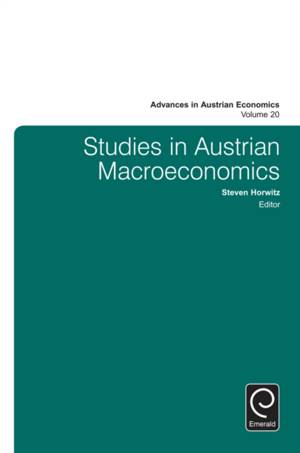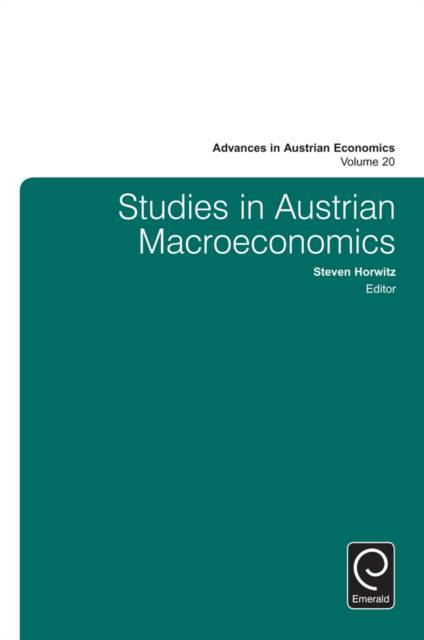
- Afhalen na 1 uur in een winkel met voorraad
- Gratis thuislevering in België vanaf € 30
- Ruim aanbod met 7 miljoen producten
- Afhalen na 1 uur in een winkel met voorraad
- Gratis thuislevering in België vanaf € 30
- Ruim aanbod met 7 miljoen producten
Zoeken
Studies in Austrian Macroeconomics
€ 122,95
+ 245 punten
Omschrijving
The US housing bubble and the ensuing financial crisis and recession, as well as the ongoing slow recovery, have prompted a renewal of interest in the business cycle theory associated with the Austrian school of economics. Over the last thirty years, Austrian economists have extended and refined that theory while also deploying Austrian insights in other areas of monetary theory and macroeconomics. In this volume, a number of macroeconomists influenced by the Austrian school demonstrate its explanatory power by applying those ideas to a variety of historical and contemporary issues. Several of the papers focus on the differences between the US and Canadian experiences during the early 21st century, while other contributors offer critical extensions of Austrian monetary and business cycle theory. The volume also includes empirical applications to the housing boom and bust, and several papers consider the place of Austrian macroeconomics within the school's approach to political economy and public policy more generally. "Studies in Austrian Macroeconomics" shows the breadth and depth of modern macroeconomics in the Austrian tradition.
Specificaties
Betrokkenen
- Uitgeverij:
Inhoud
- Aantal bladzijden:
- 210
- Taal:
- Engels
- Reeks:
- Reeksnummer:
- nr. 20
Eigenschappen
- Productcode (EAN):
- 9781786352743
- Verschijningsdatum:
- 13/05/2016
- Uitvoering:
- Hardcover
- Formaat:
- Genaaid
- Afmetingen:
- 152 mm x 229 mm
- Gewicht:
- 562 g

Alleen bij Standaard Boekhandel
+ 245 punten op je klantenkaart van Standaard Boekhandel
Beoordelingen
We publiceren alleen reviews die voldoen aan de voorwaarden voor reviews. Bekijk onze voorwaarden voor reviews.










